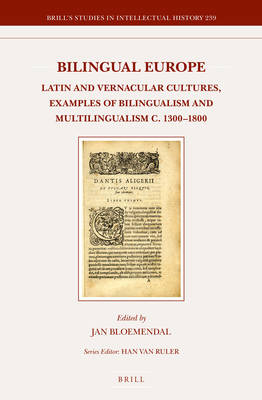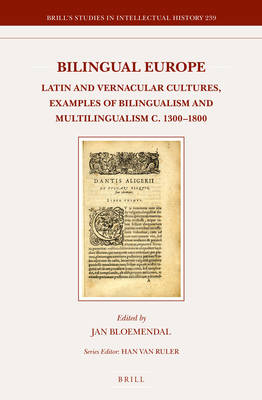
Je cadeautjes zeker op tijd in huis hebben voor de feestdagen? Kom langs in onze winkels en vind het perfecte geschenk!
- Afhalen na 1 uur in een winkel met voorraad
- Gratis thuislevering in België vanaf € 30
- Ruim aanbod met 7 miljoen producten
Je cadeautjes zeker op tijd in huis hebben voor de feestdagen? Kom langs in onze winkels en vind het perfecte geschenk!
- Afhalen na 1 uur in een winkel met voorraad
- Gratis thuislevering in België vanaf € 30
- Ruim aanbod met 7 miljoen producten
Zoeken
Bilingual Europe
Latin and Vernacular Cultures - Examples of Bilingualism and Multilingualism C. 1300-1800
Jan Bloemendal
€ 244,45
+ 488 punten
Omschrijving
Bilingual Europe presents to the reader a Europe that for a long time was 'multilingual' besides the vernacular languages Latin played an important role. Even 'nationalistic' treatises could be written in Latin. Until deep into the 18th century scientific works were written in it. It is still an official language of the Roman Catholic Church. But why did authors choose for Latin or for their native tongue? In the case of bilingual authors, what made them choose either language, and what implications did that have? What interactions existed between the two?
Contributors include Jan Bloemendal, Wiep van Bunge, H. Floris Cohen, Arjan C. van Dixhoorn, Guillaume van Gemert, Joep T. Leerssen, Ingrid Rowland, Arie Schippers, Eva Del Soldato, Demmy Verbeke, Françoise Waquet, and Ari H. Wesseling+.
Contributors include Jan Bloemendal, Wiep van Bunge, H. Floris Cohen, Arjan C. van Dixhoorn, Guillaume van Gemert, Joep T. Leerssen, Ingrid Rowland, Arie Schippers, Eva Del Soldato, Demmy Verbeke, Françoise Waquet, and Ari H. Wesseling+.
Specificaties
Betrokkenen
- Auteur(s):
- Uitgeverij:
Inhoud
- Aantal bladzijden:
- 252
- Taal:
- Engels
- Reeks:
- Reeksnummer:
- nr. 239
Eigenschappen
- Productcode (EAN):
- 9789004289628
- Verschijningsdatum:
- 13/03/2015
- Uitvoering:
- Hardcover
- Formaat:
- Genaaid
- Afmetingen:
- 160 mm x 241 mm
- Gewicht:
- 521 g

Alleen bij Standaard Boekhandel
+ 488 punten op je klantenkaart van Standaard Boekhandel
Beoordelingen
We publiceren alleen reviews die voldoen aan de voorwaarden voor reviews. Bekijk onze voorwaarden voor reviews.









